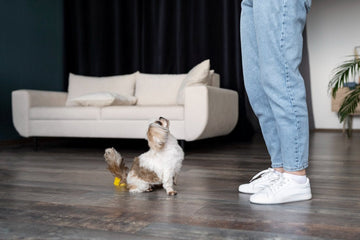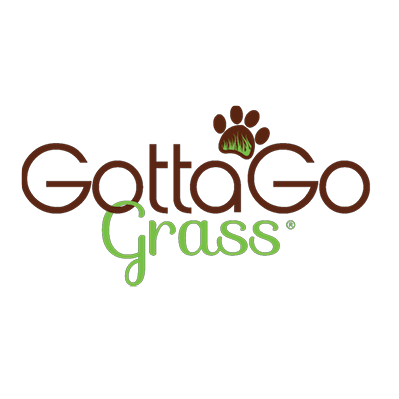
Living in an apartment presents unique challenges to pet owners when meeting their pet's exercise needs. Dogs naturally love to explore the outdoors. When their living space is confined to four walls, it's essential to get creative in keeping them physically and mentally stimulated. Without proper exercise, dogs can develop health problems like obesity and experience boredom, leading to undesirable behaviors like excessive barking, chewing, or digging.
Much like humans, dogs require regular activity to maintain their health and well-being. Providing regular exercise, even within the confines of your apartment, can help keep them fit, content, and well-behaved.
Key Takeaways
- Like humans, dogs need regular physical and mental exercise to stay healthy. Dogs can become overweight without enough exercise, leading to various health problems. Inactivity can also lead to boredom, resulting in undesirable behaviors such as excessive barking, chewing, or digging.
- Living in an apartment doesn’t mean your dog has to miss out on exercise. Engage them with indoor activities like tug of war, puzzle games, indoor fetch, and obedience drills. Tailor these exercises to your dog’s age and breed.
- Dog toys like plush squeaky toys, treat-dispensing balls, and interactive puzzles can keep dogs active and mentally engaged. Additionally, products like indoor grass potty pads for dogs offer a convenient and sanitary solution for indoor potty breaks, making them ideal for apartment living.

Why is Exercise Important for Dogs?
A lack of physical and mental stimulation can lead to a range of issues in dogs, such as weight gain, which can result in other health issues like diabetes and joint pain. Inactivity can also lead to boredom, causing your dog to develop unwanted and destructive behaviors like excessive barking or chewing on furniture.
Additionally, sedentary behavior can make your dog restless and prone to anxiety. By engaging in a consistent exercise routine, you can help your dog maintain a healthy weight and keep their mind sharp and engaged.
Burning Off Energy: Dogs have a lot of energy that needs to be channeled in a productive way. If this energy isn’t burned off through daily exercise, it can display as problematic behaviors like chewing on furniture, scratching at doors, or even aggression. By incorporating physical activity into your dog’s routine, you’re giving them an outlet to release pent-up energy, which in turn leads to a calmer and more relaxed pet.
Mental Stimulation: Physical exercise isn’t just about keeping your dog’s body in shape—it’s also about providing mental stimulation. Interactive games and exercises like puzzle toys and hide-and-seek help keep their minds sharp. When dogs are mentally engaged, they’re less likely to develop destructive habits like incessant barking or compulsive licking.
Health Risks of Inactivity: Obesity is a growing concern among today's pet owners. A 2022 study reported that 59% of dogs in the US are classified as overweight or obese. Dogs that are 10% to 30% more than their ideal body weight are considered obese, which puts them at a higher risk of diabetes, joint injuries, respiratory issues, and even certain types of cancer. For senior dogs, excess weight can exacerbate arthritis, making movement more painful and lessening their quality of life.

How Much Exercise Do Dogs Need?
The amount of exercise your dog needs will depend on their breed, age, and individual health. Energetic and active dogs like Border Collies or German Shepherds may need several hours of exercise each day, while breeds like Bulldogs or senior dogs may only require moderate activity.
Nevertheless, the general guideline is that most dogs benefit from 30-45 minutes of exercise daily. This can include walking, playing, and training. Mental exercise, such as solving puzzles or obedience training, is equally important and should be included in your dog’s routine. If your dog frequently gets the zoomies—those sudden bursts of energy where they run around the house wildly—it may be a sign they aren’t getting enough exercise.
Choosing the Right Breed for Apartment Living
When considering a dog for an apartment, it’s important to choose breeds that adapt well to smaller spaces and require less exercise. For more information, check out our article, 14 Great Dog Breeds for Apartment Life, which explores breeds like English Bulldogs, Shih Tzus, and Dachshunds that can thrive in smaller living environments with proper exercise and mental stimulation.
7 Indoor Exercise Ideas for Dogs
Not all dogs are built the same, and their exercise needs will differ depending on their age and breed. Puppies are usually more playful and have shorter attention spans. This means they thrive on multiple short play sessions spread throughout the day rather than long, continuous activities. Meanwhile, senior dogs require gentler activities to avoid putting stress on their joints.
Tug of War
This classic game can increase your dog's heart rate without requiring too much space. Make this activity fun, safe, and engaging by using a sturdy toy like this plush squeaky dog toy. With its dual texture design—featuring both rope and plush—this toy offers a variety of play experiences, making it perfect for a good game of tug.
The rope is ideal for pulling, while the plush section provides a softer texture that’s gentle on your dog’s teeth and gums. Remember to establish ground rules when playing tug of war, such as letting go when you say drop it. This reinforces commands and obedience, keeps the game under control, and prevents overexcitement.
Puzzle Games and Toys
Puzzle toys are excellent for keeping your dog mentally stimulated. Options like snuffle mats or treat tumbler balls engage their senses and make them work for reward. These toys can be particularly beneficial for fast eaters, slowing down their pace and preventing digestive issues.
Indoor Fetch
Although fetch is traditionally an outdoor activity, it can be adapted for indoor play using soft, low-bounce toys. If you have stairs, tossing the toy up a few steps adds an extra challenge. Automatic ball launchers can be used in larger indoor spaces but should be set to shorter distances to avoid damage.

Hide and Seek
Dogs love the challenge of finding their owners or favorite toys. Start with easy hiding spots and gradually increase the difficulty. Use treats or praise as a reward when they find you. This game not only provides mental exercise but also strengthens your bond.
Obedience Drills
Training your dog to follow commands like sit, stay, and come can be fun and double as exercise. Stringing commands together in quick succession keeps your dog mentally engaged and helps reinforce its obedience skills.
Scavenger Hunt
Hide your dog’s favorite toys or treats around the house. Encourage them to use their nose to sniff out the hidden items. This game stimulates your dog’s senses and provides a good balance of physical and mental activity.
Create an Indoor Obstacle Course
Use household items like pillows, stools, and broom handles to create a mini agility course. Guide your dog through the course with treats, rewarding them for completing each obstacle. This is a fun way to build your dog’s confidence and agility while keeping them physically active.

Final Thoughts
Indoor exercises are an excellent way to keep your dog active when you don’t have immediate access to an outdoor space or when the weather doesn’t permit. However, your dog's exercise routine shouldn’t wholly replace the health benefits of going outdoors. Daily exercise that includes walks or visits to a dog park allows your pet to socialize with other dogs and experience new sights and smells. For dog owners living in apartments, solutions like grass pee pads for dogs can also provide a convenient alternative for bathroom breaks when you can’t fit an outdoor walk into your schedule.
Overall, staying proactive about your dog’s exercise needs will ensure they remain a happy, healthy, and well-behaved companion, no matter the size of your living space.




